
Try-It Diet: Whole-Grain, High-Fiber
A two-week healthy eating plan
Adams Media, an imprint of Simon & Schuster, Inc.

Avon, Massachusetts
Contents
Introduction
A Try-It Diet is just that a diet that you can try out for two weeks to see if it is a good fit for you. Keep in mind that not every diet is right for every person; please consult with your doctor before making radical changes to your diet. Getting enough fiber and whole grains in the diet is essential to your health and well-being. Fiber is made up of a variety of plant compounds that the human body uses to maintain good digestive-tract health. Plant products contain phytochemicals, which protect first the plants themselves and then the humans who consume them. Whole grains, nuts, seeds, legumes, vegetables, and fruits are all important for a high-fiber diet.
There are two main types of fiber: soluble fiber and insoluble fiber. The body needs both to perform different functions. The body cannot digest fiber as it digests fats or carbohydrates. Fiber makes its way through the digestive system, helping the body maintain overall health. Soluble fiber dissolves in water to form a gel-like substance. It helps the body by absorbing cholesterol and keeping blood sugar levels healthy.
Soluble fiber is important in keeping the bodys energy level balanced. Oatmeal, legumes, barley, and fruits are high in soluble fiber. These foods also provide more nutritional value than do insoluble fibers. Also known as roughage, insoluble fiber does not dissolve in water. Its benefit is that it is not digested but moves through the digestive tract, helping to flush waste out of the digestive system quickly. Whole grains and most vegetables are high in insoluble fiber.
Breads, pastas, and pastries made with whole grains rather than refined white flour are higher in insoluble fiber. Popcorn is another good source of insoluble fiber but use unbuttered popcorn, not the stuff thats laden with butter. Fiber is instrumental in keeping your digestive system running smoothly. It helps keep bowel movements regular and decreases your risk for irritable bowel syndrome. Low-fiber diets leave you at risk for developing diverticulosis pouches in the colon and diverticulitis inflamed pouches in the colon. Besides keeping your digestive system in good working order, fiber can reduce your risk for colon cancer and heart disease.
It makes you feel full longer and may actually prevent the body from absorbing fat, which is helpful in losing weight. Fiber also helps the body maintain a lower blood glucose level so that less insulin is necessary to ferry energy to the bodys cells. Eating a diet rich in fiber is one way to help prevent type 2 diabetes, and fiber can help people with diabetes control it. Dietary fiber helps the body eliminate cholesterol and is crucial in lowering cholesterol levels. Whole grains are a source of dietary fiber, mostly insoluble. They also have large amounts of vitamins, which are soluble.
Wheat is the most common whole grain. The edible parts of wheat are the seeds or kernels. The unprocessed wheat kernel, commonly known as a wheat berry, is made up of three major parts: bran, germ, and endosperm. Wheat berry contains vitamins, minerals, and nutrients, including vitamin E, twelve B vitamins, essential fatty acids, protein, iron, copper, zinc, manganese, phosphorus, and magnesium. It also contains folic acid, which is vital to developing fetuses. Oats are a high-protein grain with amino acids similar to wheat.
Oats also help stabilize blood sugar, which helps the body to maintain stamina. They contain the highest percentage of unsaturated fat among the grains. Brown rice is high in insoluble fiber because the outer bran layer is left on the grain. Wild rice, also a water-growing grain, is loaded with insoluble fiber and soluble vitamins. Buckwheat, quinoa, and amaranth are seeds that are treated as whole grains and are high in fiber but are not actually from the grass family. Quinoa is grown in the Andes and contains the highest amount of protein of all the grain-like foods.
Vegetables and fruits eaten raw with their skins on are a better source of fiber than cooked and peeled vegetables. For example, a fresh apple has more fiber than cooked applesauce in a comparable serving. However, some vegetables cannot be eaten raw (think artichokes) or are simply not appealing unless cooked (think Brussels sprouts). Not all preparations of vegetables are a good source of fiber: French fried potatoes are not, but a baked potato with the skin is. A healthy alternative to fried potato chips with a sour creambased dip could be corn tortilla chips with fresh tomato salsa and avocado dip. Raw carrots, radishes, or celery sticks in place of potato chips as a side for a sandwich are a good way to start adding fiber to the diet.
Slowly phase out the unhealthy elements of your diet. Replace the chocolate chip cookies with oatmeal cookies. Snack on trail mix with M&Ms instead of a bag of just M&Ms. Stock your cupboards with dried fruits and nuts, and replenish your supply of fresh fruits and vegetables every time you go grocery shopping. Get different fruits and vegetables each time to increase variety and stave off boredom. Find the type of bread your family likes the best.
If youve been buying plain white bread for years, change to a multigrain bread and work your way up to a whole-grain bread. Take a similar approach with pasta and rice. Mix whole-grain pasta and regular pasta together and slowly increase the ratio of whole-grain pasta until you can eliminate the regular pasta altogether. Do the same for brown rice and white rice. To slow the release of sugar into the system, add celery, lettuce, cabbage, and fruit to various dishes. Every meal should include a salad laced with red onions, radishes, cucumbers, extra nuts, sprouts, and jicama.
Try making salads with an extra kick black beans, fresh corn, and cherry tomatoes for a large serving of fiber, protein, and happiness. If youd like to explore the vegetarian lifestyle in more detail, check out The Everything Whole-Grain, High-Fiber Cookbook , available in print (ISBN: 978-1-59869-507-6) and eBook (eISBN: 978-1-60550-200-7) formats.
Weekly Meal Plans
Week 1
Sunday
Breakfast
Lunch
Dinner
Dessert
Monday
Breakfast
Lunch
Snack
Dinner
Tuesday
Breakfast
Lunch
Snack
Dinner
Wednesday
Breakfast
Lunch
Snack
Dinner
Thursday
Breakfast
Lunch
Snack
Dinner
Friday
Breakfast
Lunch
Snack
Dinner
Saturday
Breakfast
Lunch
Dinner
Dessert
Week 2
Sunday
Breakfast
Lunch
Dinner
Dessert
Monday
Breakfast
Next page
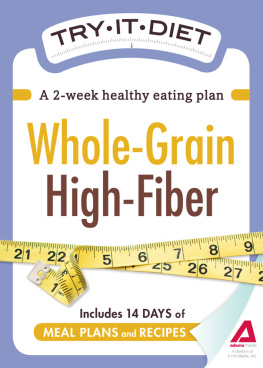
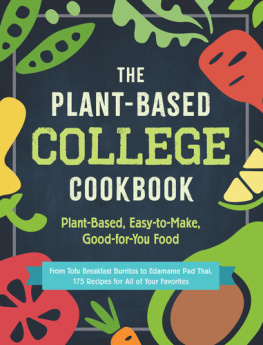
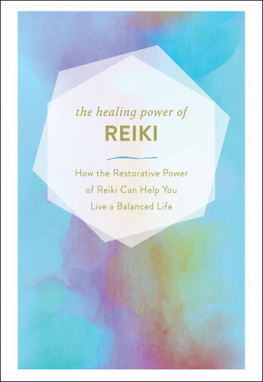
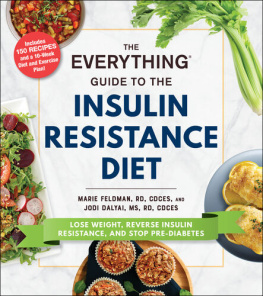


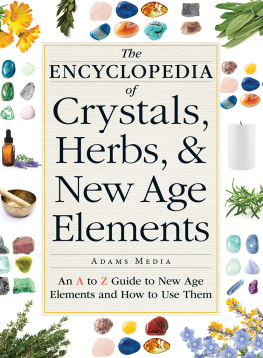
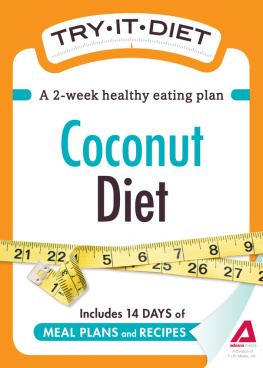

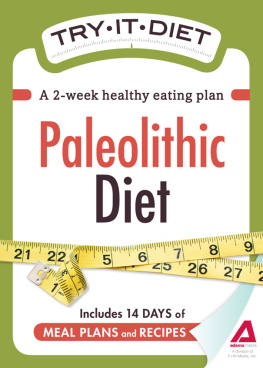

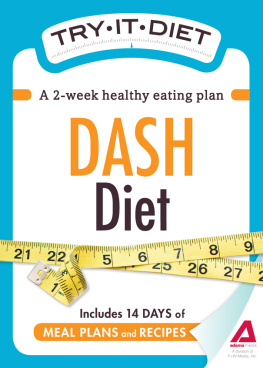
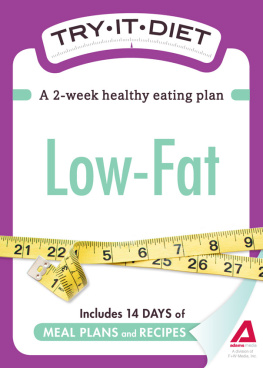
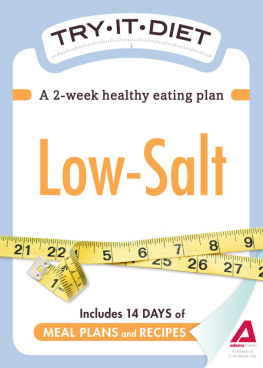
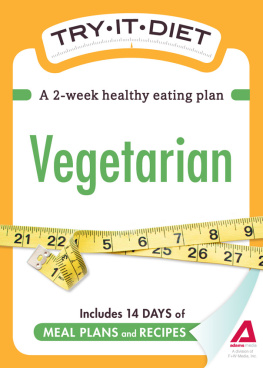


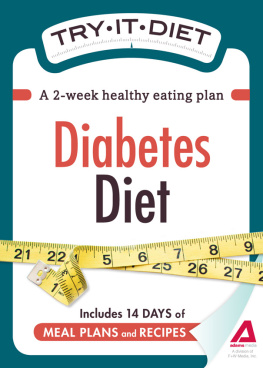
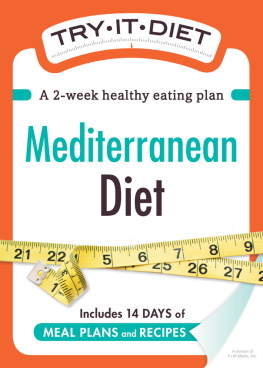

 Avon, Massachusetts
Avon, Massachusetts